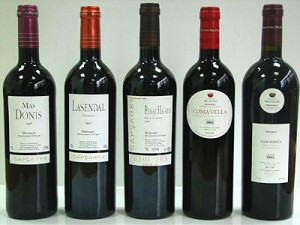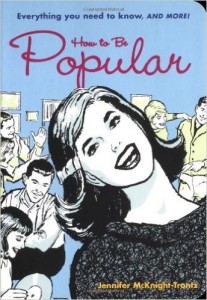You Too Can Be A Revered Leader!
I just spotted this article on Inc. magazine’s website:
Want to Be A Revered Leader? Here’s How The 25 Most Admired CEOs Win The Hearts of Their Employees.
The article’s subhead is: “America’s 25 most admired CEOs have earned the respect of their people. Here’s how you can too.”
Does this sound familiar? It’s a good example of the survivorship fallacy. (See also here and here). The 25 CEOs selected for the article “survived” a selection process. The author then highlights the common behaviors among the 25 leaders. The implication is that — if you behave the same way — you too will become a revered leader.
Is it true? Well, think about the hundreds of CEOs who didn’t survive the selection process. I suspect that many of the unselected CEOs behave in ways that are similar to the 25 selectees. But the unselected CEOs didn’t become revered leaders. Why not? Hard to say …precisely because we’re not studying them. It’s not at all clear to me that I will become a revered leader if I behave like the 25 selectees. In fact, the reverse my be true — people may think that I’m being inauthentic and lose respect for me.
A better research method would be to select 25 leaders who are “revered” and compare them to 25 leaders who are not “revered”. (Defining what “revered” means will be slippery). By selecting two groups, we have some basis for comparison and contrast. This can often lead to deeper insights.
As it stands, the Inc. article reminds me of the book for teenagers called How To Be Popular. It’s cute but not very meaningful.
Critical Thinking, Framing, and Red Wine

What else should I have?
I like wine, especially red wine. My tastes range from elegant to earthy. In fact, I’m not terribly discriminating – I like to sample them all.
I also feel the need to justify my red wine indulgences. So I’m always looking for news about the positive health effects of drinking red wine. (This is a classic case of System 2 rationalizing a decision that was initially made – for entirely different reasons — in System 1. My System 1 made the decision; my System 2 justifies it.)
As you may know, there’s plenty of good news about red wine and good health. Generally, drinking red wine is associated with better health and longer life. It’s a J-shaped curve, “…light to moderate drinkers have less risk than abstainers, and heavy drinkers are at the highest risk.” Drink a little bit and you get healthier; drink too much and you get unhealthier.
Is there a cause-and-effect relationship here? It certainly hasn’t been proven. All we’ve been able to show so far is that there is a correlation. A change in one variable is correlated to a change in another variable. Just because variable A happens before variable B, doesn’t mean that A causes B. (That would be the post hoc, ergo propter hoc fallacy as the President points out in West Wing).
Yet many scientists have assumed that there is a cause-and-effect relationship and framed their studies accordingly. The typical approach is to break down the various elements of red wine to isolate the ingredient(s) that cause the beneficial health results. Is it ethanol? Is it resveratrol? Notice the assumption: there is something in the wine that causes the beneficial health result. The studies are narrowly framed.
Is this good critical thinking? Maybe not. Maybe we’re framing too tightly and assuming too much. Maybe there’s a third variable that causes us to drink red wine and be healthier.
I started thinking about this when I stumbled across a study conducted in Denmark more than a decade ago. The Danish researchers didn’t study wine. Rather, they looked at human behavior. More specifically, they looked at 3.5 million grocery store receipts.
The Danish researchers asked three interrelated questions: 1) What do wine drinkers eat? 2) Is this different from what non-wine-drinkers eat? 3) If so, could the differences in overall diet be the cause of the health effect?
The researchers looked at several specific combinations:
- What else did people who bought wine – but not beer – buy at the grocery store? (This group comprised 5.8% of the 3.5 million receipts)
- What else did people who bought beer – but not wine – buy at the grocery store? (6.6% of the total receipts).
- What else did people who bought both beer and wine buy at the grocery store? (1.2% of the total receipts).
I won’t try to summarize everything but here’s the key finding:
“This study indicates that people who buy (and presumably drink) wine purchase a greater number of healthy food items than those who buy beer. Wine buyers bought more olives, fruit or vegetables, poultry, cooking oil, and low fat products than people who bought beer. Beer buyers bought more ready cooked dishes, sugar, cold cuts, chips, pork, butter, sausages, lamb, and soft drinks than people who bought wine. Wine buyers were more likely to buy Mediterranean food items, whereas beer buyers tended to buy traditional food items.”
So, does wine cause good health? Maybe not. Maybe we framed the question improperly. Maybe we’ve been studying the wrong thing. Maybe it’s the other things that wine drinkers do that improve our health. As usual, more studies are needed. While I wait for the results, I think I’ll have a nice glass of Priorat.
The Mother Of All Fallacies

An old script, it is.
How are Fox News and Michael Moore alike?
They both use the same script.
Michael Moore comes at issues from the left. Fox News comes from the right. Though they come from different points on the political spectrum, they tell the same story.
In rhetoric, it’s called the Good versus Evil narrative. It’s very simple. On one side we have good people. On the other side, we have evil people. There’s nothing in between. The evil people are cheating or robbing or killing or screwing the good people. The world would be a better place if we could only eliminate or neuter or negate or kill the evil people.
We’ve been using the Good versus Evil narrative since we began telling stories. Egyptian and Mayan hieroglyphics follow the script. So do many of the stories in the Bible. So do Republicans. So do Democrats. So do I, for that matter. It’s the mother of all fallacies.
The narrative inflames the passions and dulls the senses. It makes us angry. It makes us feel that outrage is righteous and proper. The narrative clouds our thinking. Indeed, it aims to stop us from thinking altogether. How can we think when evil is abroad? We need to act. We can think later.
I became sensitized to the Good versus Evil narrative when I lived in Latin America. I met more than a few people who are convinced that America is the embodiment of evil. They see it as a country filled with greedy, immoral thieves and murderers who are sucking the blood of the innocent and good people of Latin America. I had a difficult time squaring this with my own experiences. Perhaps the narrative is wrong.
Rhetoric teaches us to be suspicious when we hear Good versus Evil stories. The word is a messy, chaotic, and random place. Actions are nuanced and ambiguous. People do good things for bad reasons and bad things for good reasons. A simple narrative can’t possibly capture all the nuances and uncertainties of the real world. Indeed, the Good versus Evil doesn’t even try. It aims to tell us what to think and ensure that we never, ever think for ourselves.
When Jimmy Carter was elected president, John Wayne attended his inaugural even though he had supported Carter’s opponent. Wayne gave a gracious speech. “Mr. President”, he said, “you know that I’m a member of the loyal opposition. But let’s remember that the accent is on ‘loyal’”. How I would love to hear anyone say that today. It’s the antithesis of Good versus Evil.
Voltaire wrote that, “Anyone who has the power to make you believe absurdities has the power to make you commit injustices.” The Good versus Evil narrative is absurd. It doesn’t explain the world; it inflames the world. Ultimately, it can make injustices seem acceptable.
The next time you hear a Good versus Evil story, grab your thinking cap. You’re going to need it.
(By the way, Tyler Cowen has a terrific TED talk on this topic that helped crystallize my thinking. You can find it here.)
Fallacy of Fallacies

It’s true!
Let’s talk about logic for a moment. When you hear the word argument, you may think of a heated exchange of opinions. It’s emotional and angry. A logician would call this a quarrel rather than an argument. In the world of logic, an argument means that you offer reasons to support a conclusion.
An argument can be valid or invalid and sound or unsound. Here’s an example of an argument in a classic form:
Premise 1: All women have freckles.
Premise 2: Suellen is a woman.
Conclusion: Suellen has freckles.
We have two reasons that lead us to a conclusion. In other words, it’s an argument. Is it a good argument? Well, that’s a different question.
Let’s look first at validity. An argument is valid if the conclusion flows logically from the premises. In this case, we have a major premise and a minor premise and – if they are true – the conclusion is inescapable. Suellen must have freckles. The conclusion flows logically from the premises. The argument is valid.
But is the argument sound? An argument is sound if the premises are verifiably true. The second premise is verifiably true – Suellen is indeed a woman. But the first premise is not verifiably true. All we have to do is look around. We’ll quickly realize that the first premise is false – not all women have freckles.
So, the argument is valid but unsound. One of the premises that leads to the conclusion is false. Can we safely assume, then, that the conclusion is also false? Not so fast, bub.
This is what’s known as the fallacy of fallacies. We often assume that, if there’s a fallacy in an argument, then the conclusion must necessarily be false. Not so. It means the conclusion is not proven. The fact that something is not proven doesn’t necessarily mean that it’s false. (Indeed, in technical terms, we’ve never proven that smoking causes cancer in humans).
Our example demonstrates the fallacy of fallacies. We agree that the argument is valid but not sound. One of the premises is false. Yet, if you know Suellen, you know that the conclusion is true. She does indeed have freckles. So even an unsound (or invalid) argument can result in a conclusion that’s true.
What’s the moral here? There’s a big difference between not proven and not true. Something that’s not proven may well be true. That’s when you want to consider Pascal’s Wager.
Thinking Under Pressure

Thinking is hard.
Thinking is hard. It’s even harder when you’re under pressure. Stress lowers your IQ. When your boss is yelling at you, and your ears are pinned back, it’s hard to remember to think rationally. It’s hard to think at all – mainly you just react.
So, I always encourage my students to keep several go-to questions in their heads. These are simple, memorable questions that are always available. You can go to them quickly in an emergency. Why would you go to them? Perhaps you want to clarify the situation. Maybe you need more information. Or maybe, just maybe, you need to buy a little time.
In class the other night, I asked my students to write down their best go-to questions. They had been thinking about critical thinking for seven weeks so I assumed that they had some pretty good questions on the tips of their tongues. I was right.
I looked over the questions and realized that they fell naturally into five categories. Here are the categories with the most frequently asked questions. You might want to carry some of them around with you.
1) Gaining Self-Control – first things first: you can’t manage a situation if you can’t manage yourself. My students focused first on assessing their own situation, with questions like these:
Am I breathing effectively?
What’s my posture like? How can I change my posture to present myself more effectively?
What am I feeling right now? Are my feelings rational?
How can I engage my thinking function?
What is the other person’s purpose? Why is he behaving this way?
2) Clarifying the facts – once you’ve calmed yourself and cleared your head, you’ll want to establish what’s actually happening, with questions like these:
What are the facts? How do we know they’re facts? How were they verified?
Where did the information come from? Was the source credible?
What are our assumptions? Are they reasonable?
How did we get from the facts to the conclusions? Were there any logical fallacies along the way?
Why is this important? How does it compare in importance to Topic X or Topic Y?
Who wants to know? What is her purpose?
3) Clarifying the other person’s position – the information you have may be accurate but you also need to make sure you understand the other person’s position regarding the information. Here are some useful questions:
What’s your take on this? How do you see this?
Why do you say that? What makes you believe that?
Can you explain it in a different way?
What does “xyz” mean to you? How do you define it?
Can you paint me a picture of what you’re seeing?
Why are you so upset?
4) Clarifying the decision – you now know the “facts” and the other person’s interpretation of the facts, but you still need to figure out what decision you’re trying to make.
What outcome do we want? What’s our goal? Why?
What outcomes are possible? Which one(s) seem most fair?
Is there more than one solution? Are we trapping ourselves in a whether-or-not decision?
What if the outcome we want is not possible? Then what will we do? Is there another outcome that we might aim for?
What’s the timeframe? Are we thinking short-term or long-term?
Who else do we need to include?
How will we know when/if we need to re-visit the decision?
5) Fixing the process – when a problem arises, most organizations aim to fix the problem. They often forget to investigate the process that created the problem. Don’t forget these questions. They may well be the most important. But don’t aim for blame; this is a good time for appreciative inquiry.
How did we get here?
How can we improve our decision-making process to avoid this in the future?
What were the root causes?
How could we make a better decision in the future?
